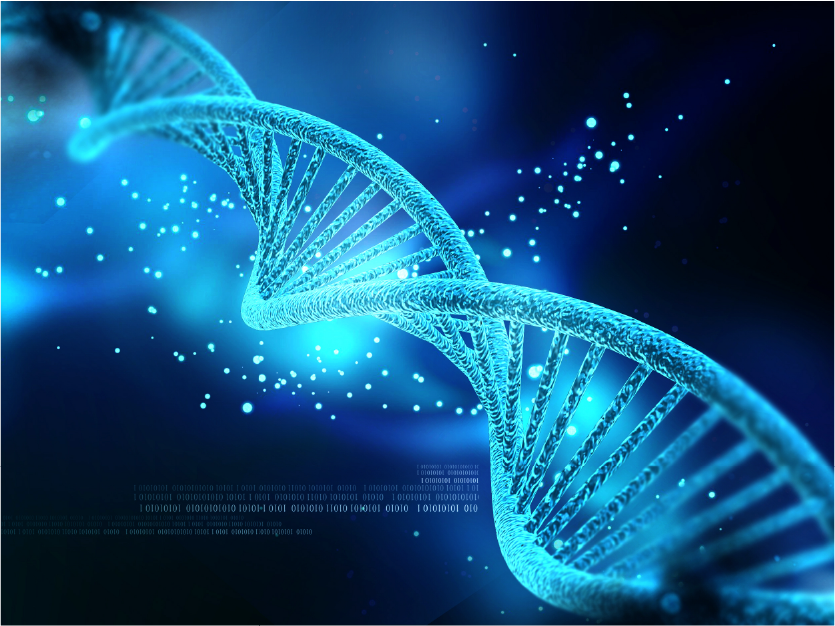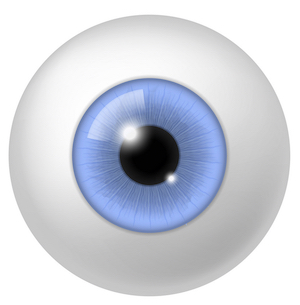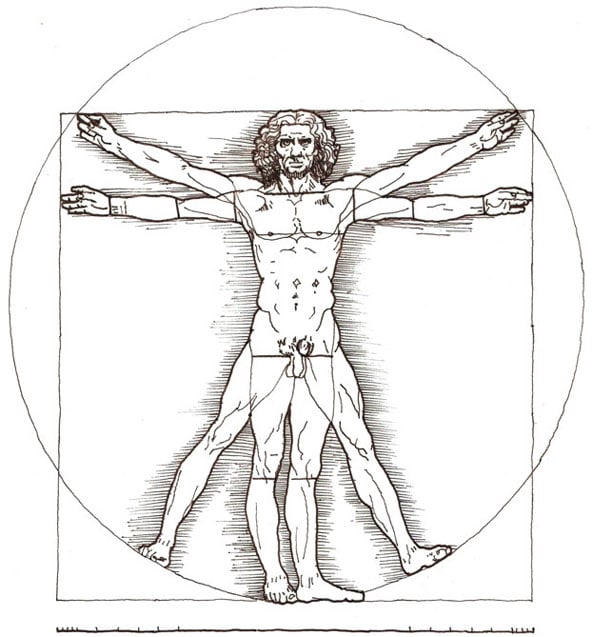 Left-handed folks aren't as rare as people with polydactyly or syndactyly (webbed hands or feet), but you may have noticed that there aren't as many left-handed people out there as right-handed people. Some of this is due to societal pressures, but I was intrigued to learn that much of it may have to do with genetics, and these genetic mechanisms may extend not just to which hand is dominant, but how the body plan is determined. Like many things in bioscience, it isn't always apparent that handedness and its genetic components are critical to other aspects of physiology, but as we will find out together, the genes associated with whether you use one hand more efficiently than the other can also influence developmental and neurological health!
Left-handed folks aren't as rare as people with polydactyly or syndactyly (webbed hands or feet), but you may have noticed that there aren't as many left-handed people out there as right-handed people. Some of this is due to societal pressures, but I was intrigued to learn that much of it may have to do with genetics, and these genetic mechanisms may extend not just to which hand is dominant, but how the body plan is determined. Like many things in bioscience, it isn't always apparent that handedness and its genetic components are critical to other aspects of physiology, but as we will find out together, the genes associated with whether you use one hand more efficiently than the other can also influence developmental and neurological health!
The Stigma of Being Left-Handed
From the way words are used to the mythology passed down through generations, left-handers have been getting a bad rap since the dawn of human evolution. Even the Latin words for left (sinister) and right (dexter) have given rise to opposing connotations, and since Latin is the root language for many others, the negative perception of lefties has persisted across the globe while the right-handed majority aren't quite as maligned, though I don't think Doctor Octopus is left-handed despite being a founding member of the Sinister Six.
It is sometimes sad to recall that while I have two aunts who are left-hand dominant, our Chinese culture forced them to perform their tasks using their right hand, sometimes using unpleasant methods. I do also note that because of the strategy and logistics behind certain sports such as baseball, infielders have to be right-handed in order to play the premium positions, which is why fun players like Javier Baez throw righty but are actually left-handed. In effect, they have to learn how to play with their non-dominant hand. Even superstars in other sports where handedness shouldn't matter, like LeBron James in basketball, play with their right hand.
In practice, I recall in elementary school that most scissors would only work if you used them with your right hand, while there was always the one pair of "left-handed" scissors that would need to be shared by the maybe two lefties in the classroom. This lack of accommodation is parodied in the Simpsons episode about Ned Flanders' Leftorium, and may even be a problem for specialized surgeons. 1 I do recall seeing a store in San Francisco's Pier 39 that catered specifically to lefties, much to the joy of my wife, who is also left-handed. Considering the prevalence of left-handed people, even if they only make up about 10% of the population, it seems sad that the social stigma and accessibility, and in some cases even their pay, are still a challenge for them.
Taking Advantage of Being Left-Handed
 Although the term "sinister" is associated with left-handers, being a lefty comes with its perks. For example, if you can throw a baseball left-handed, and throw it well, you could have a prolonged career in Major League Baseball like veteran journeymen Jamie Moyer or Rich Hill, or even a Hall of Fame career like Randy Johnson. The most prolific scorer in NHL history is Wayne Gretzky, who elected to use a left-handed stick. So if you have a young one who shows some preference for their left hand, it may pay in the long run to cultivate that skill instead of suppressing it!
Although the term "sinister" is associated with left-handers, being a lefty comes with its perks. For example, if you can throw a baseball left-handed, and throw it well, you could have a prolonged career in Major League Baseball like veteran journeymen Jamie Moyer or Rich Hill, or even a Hall of Fame career like Randy Johnson. The most prolific scorer in NHL history is Wayne Gretzky, who elected to use a left-handed stick. So if you have a young one who shows some preference for their left hand, it may pay in the long run to cultivate that skill instead of suppressing it!
Beyond athletics, being left-handed may come with various health advantages and disadvantages. While those disadvantages may include a predisposition towards psychological disorders and learning disabilities, research suggests that lefties may have less risk of developing arthritis or ulcers, and may even have a more nuanced perception of sounds. It turns out that many artists are left-handed, possibly due to their proficiency at divergent thinking to generate more possibilities. There's still some ways to go to remove the stigma of left-handedness, but there's also a lot to be proud of and to look forward to if you are left-handed!
The Complex Genetics of Left-Handedness
 Research over the years has suggested that there are many genes involved in determining handedness, which comports with many human traits also being non-Mendelian. It's actually quite astonishing to see the thousands of citations over the years about just this topic, as if the scientists were rebelling against their parents' attempts to beat the left-handedness out of them (not that I know their handedness) through satisfying their curiosity. As we shall see, genetics not only determines handedness, but also the body's left-right asymmetry and can potentially influence neurological development.
Research over the years has suggested that there are many genes involved in determining handedness, which comports with many human traits also being non-Mendelian. It's actually quite astonishing to see the thousands of citations over the years about just this topic, as if the scientists were rebelling against their parents' attempts to beat the left-handedness out of them (not that I know their handedness) through satisfying their curiosity. As we shall see, genetics not only determines handedness, but also the body's left-right asymmetry and can potentially influence neurological development.
One of the original genetic proposals to explain handedness suggested that there were two genes, one that would predispose the individual towards right-handedness while the other can trigger a random preference for one hand or the other. We also know that if two parents are right-handed, their offspring has a 10% chance of being left-handed, but if at least one parent is left-handed, then the odds of their offspring being also left-handed will more than double. 1 There is also a long record of right-brained (left-hand dominant) and left-brained (right-hand dominant) individuals having structural differences in their respective brains, which can differentially influence their abilities to process language and emotions. 1
In 2019, a publication from a group from the University of Oxford attempted to use genome-wide association studies to identify genes and traits in left-handers. 2 In this study, they were able to identify microtubule-related genes (including Tau!) that they could correlate with handedness as well as neurological disorders such as schizophrenia, Alzheimer's, and Parkinson's. The microtubule-related genes suggest a role in brain development and patterning.
Determining Asymmetry Through Signaling
Similar to many genes in embryonic development, there are left-right axis determination genes that restrict the positioning of various factors in the growing embryo as the programming targets different parts of the embryo to develop into limbs and organs. The most famously studied of these is the LEFTY1 gene, which restricts the expression of LEFTY2 and a growth factor known as NODAL to the left side of the embryo. This acts to keep the organs in the "normal" orientation we observe in our anatomy textbooks, while a LEFTY1 defect will abolish this normal asymmetry. 3 The LEFTY gene, or at least a homolog of it, is also used in plants for a similar purpose! 4
LEFTY1 is important in helping establish a "midline" to separate the left and right sides of the developing embryo, which acts as a barrier to maintain the asymmetry of specific internal organs despite the fact that higher invertebrates and vertebrates display bilateral symmetry. 5 It has been observed that some of these asymmetrically expressed genes are cilia, which seems at least tangential to the other study we explored earlier where some of the handedness-associated genes are microtubule-based. 2, 5 In most studies, we find that LEFTY genes, NODAL, a bone morphogenetic protein (BMP) antagonist known as Cerberus (CER1), and the homeobox protein PITX2 are all involved in a signaling cascade that maintains the left-right asymmetry that we take for granted. 3, 5, 6 Taken together, this finely coordinated system keeps our internal organs from spinning in the other direction (they'll still probably work fine, your X-rays and MRI scans will probably just look weird)!
Celebrate Your Handedness
No matter which hand your throw or write with, your uniqueness will always shine through! The research into handedness continues to give us new insights into psychology, development, and signaling pathways, and could promote awareness and product accessibility for left-handers everywhere that they may not have enjoyed before. It's OK to be sinister, as long as you're just left-handed and not actually up to something nefarious.
If you're interested in the International Left Handers Day celebration and to search for products that you can more easily use as a southpaw, check out this site and appreciate your fellow humans, even if they know something you do not know...
References
- Jing SS (2022) "Hand Dominance: Nature, Nurture, and Relevance for Hand Surgeons." J Hand Microsurg 14(1):111-112.
- Wiberg et al (2019) "Handedness, language areas and neuropsychiatric diseases: insights from brain imaging and genetics." Brain 142(10):2938-2947.
- Meno et al (1998) "lefty-1 is Required for Left-Right Determination as a Regulator of lefty-2 and nodal." Cell 94(3):287-297.
- Hashimoto T (2002) "Molecular genetic analysis of left-right handedness in plants." Philos Trans R Soc Lond B Biol Sci 357(1422):799-808.
- Tabin C (2006) "The Key to Left-Right Asymmetry." Cell 127(1):27-32.
- Li et al (2017) "Cerberus-Nodal-Lefty-Pitx signaling cascade controls left-right asymmetry in amphioxus." PNAS 114(14):3684-3689.




